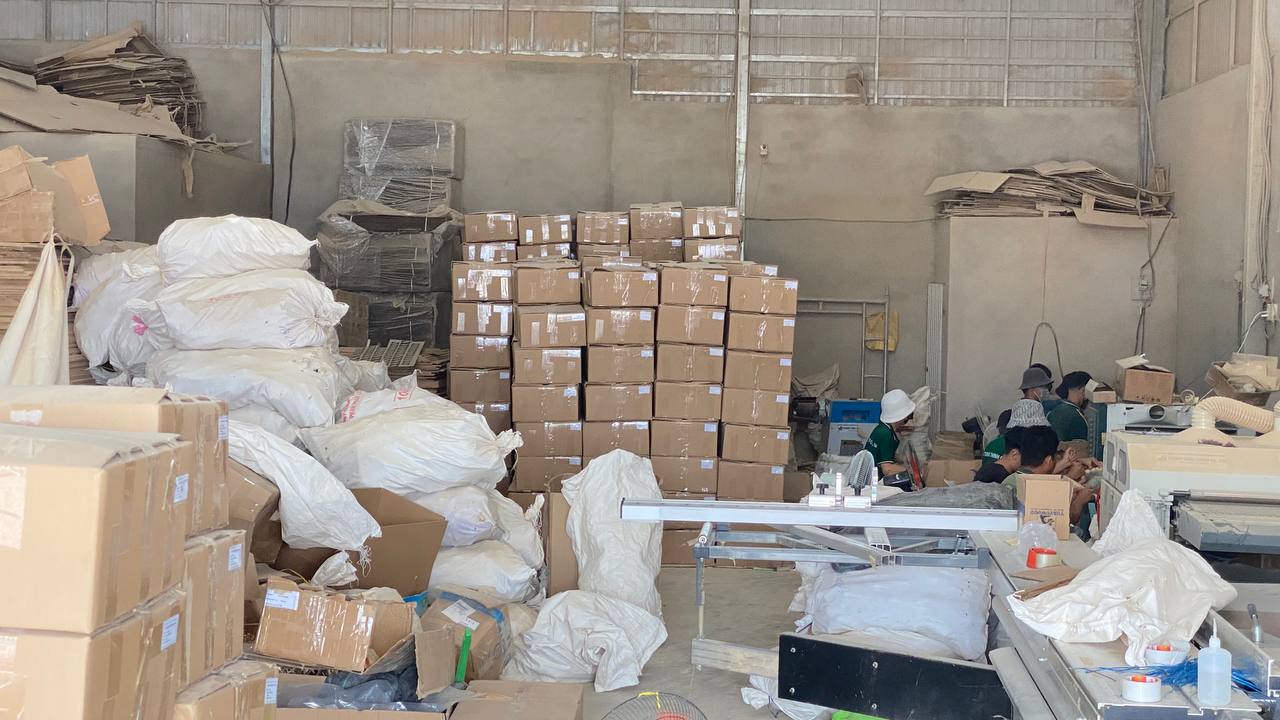Table of Contents
I. Introduction


In the years following the COVID-19 pandemic, the global tableware market has witnessed a dramatic shift in both consumer preferences and purchasing behaviors. As people spent more time at home and prioritized quality living spaces, there was a notable surge in demand for functional, aesthetically pleasing kitchenware. Retailers and importers have since pivoted to accommodate this shift, with one category standing out: wholesale bowls and plates, particularly those crafted from natural materials.
Among the available options, wooden bowls and plates have emerged as a top contender. They resonate with today’s eco-conscious consumers who seek sustainable alternatives without compromising on design or durability. The warm tones, unique grain patterns, and lightweight nature of wood make it an ideal choice for homes, restaurants, and lifestyle stores aiming to create a rustic, elegant, or nature-inspired ambiance.
Furthermore, the rise of sustainability as a global purchasing motivator has brought wooden tableware into the spotlight. Unlike plastic or ceramic, wooden products offer biodegradability, low carbon manufacturing, and ethical sourcing opportunities. This aligns with changing customer habits and presents a strong opportunity for wholesalers, distributors, and importers looking to invest in eco-friendly, high-margin products.


This article will guide you through everything retailers and importers need to know about sourcing, selecting, and capitalizing on the growing demand for wholesale wooden bowls and plates in 2025—positioning your business at the forefront of a more sustainable future.
II. Market Trends Impacting Wholesale Bowls and Plates in 2025
The demand for wholesale bowls and plates—especially those made from sustainable materials like wood—has evolved significantly in the post-pandemic landscape. As businesses recover from the economic disruptions of COVID-19, new priorities have emerged: health-consciousness, environmental responsibility, and lifestyle-driven consumption.
COVID-19 Coverage: Ways the Pandemic Has Changed Consumer Behavior
1. Post-COVID Shifts in Consumer Behavior
COVID-19 US Consumer Behavior Report
The pandemic led to a permanent increase in home cooking and dining. Consumers now place greater emphasis on the look and feel of their kitchenware. This means retailers and hospitality providers are seeking out tableware that offers both function and design appeal—a trend wooden bowls and plates fulfill exceptionally well.
2. Eco-Conscious Purchasing is the New Standard
Sustainability is no longer a niche. Recent studies show that 73% of global consumers would change their consumption habits to reduce environmental impact. In the wholesale market, this has pushed demand for wooden bowls and plates that are reusable, biodegradable, and ethically sourced.
3. Hospitality Industry Recovery Driving Bulk Purchases
Restaurants, cafés, and boutique hotels—especially those with eco-friendly branding—are updating their dining aesthetics with natural, wooden tableware. As they scale operations back up, many are turning to wholesale wooden bowls and plates to ensure consistency in design and quality, while aligning with their sustainability values.
4. Government Regulations & Green Procurement


Countries in Europe and North America are introducing stricter regulations on plastic use and encouraging green procurement policies. This supports the long-term potential of wooden tableware in the wholesale industry, especially when it comes to bulk purchases for public institutions and corporate gifting.
In short, the market trajectory shows that wooden wholesale bowls and plates are not just a passing trend but a durable category with growing momentum. Retailers and importers who recognize these shifts early are positioned to meet new demand head-on—by offering products that are as environmentally responsible as they are profitable.
III. Why Wholesale Bowls and Plates Made from Wood Are Leading the Market
The demand for wholesale bowls and plates has evolved beyond function—buyers are now prioritizing materials, sustainability, and aesthetics. As consumer behavior shifts, wooden tableware is gaining strong traction in both local and international wholesale markets.
1. Wood: A Material That Speaks Quality and Sustainability


Modern buyers associate wood with natural beauty and eco-responsibility. By choosing wooden wholesale bowls and plates, importers and retailers align with consumer preferences for eco-friendly products—especially in health-conscious and sustainable-living sectors.
2. Each Wooden Product Tells a Unique Story
In contrast to uniform plastic or ceramic alternatives, wholesale bowls and plates made from natural wood are unique in grain and texture. This handcrafted appeal adds perceived value, especially for businesses that market quality, authenticity, and design-forward dining.


3. Eco-Friendly, Biodegradable, and Responsibly Sourced
Using renewable materials like American walnut, acacia, or reclaimed wood gives wholesale bowls and plates a major edge in today’s green market. Retailers, restaurants, and kitchenware brands benefit from offering tableware that supports circular production and sustainable sourcing.
4. Highly Functional Yet Stylish
Whether for casual cafés or upscale dining concepts, wholesale wooden bowls and plates offer a perfect balance of form and function. They’re strong, lightweight, and versatile—making them ideal for bulk buyers looking for long-lasting and transport-friendly inventory.
5. Growth in B2B Demand Across Sectors
The rising preference for natural, plastic-free options has created widespread demand for wholesale bowls and plates in industries like hospitality, foodservice, home décor, and kitchen retail. These sectors are actively searching for stylish yet sustainable options that align with brand ethics.
IV. How to Choose the Right Supplier for Wholesale Bowls and Plates


Choosing the right supplier for wholesale bowls and plates can make all the difference in maintaining product quality, meeting consumer demand, and ensuring smooth business operations. For retailers, foodservice providers, or distributors looking to source wooden tableware, here are key factors to consider when selecting a supplier.
1. Product Quality and Material Sourcing
The quality of wholesale bowls and plates starts with the materials. Look for suppliers who use high-quality, sustainably sourced wood—whether it’s FSC-certified or reclaimed wood. The wood should be free from harmful chemicals and finish materials, ensuring that the products are safe for food contact and meet any industry standards for durability.
2. Supplier Reputation and Experience


Working with an established supplier that has a strong reputation in the market can give your business confidence in the quality and reliability of wholesale wooden bowls and plates. Research customer reviews, check for any certifications (like ISO or FSC), and ask for references from other clients who have ordered similar products.
3. Customization Options
If your business requires specific sizes, designs, or finishes, find a supplier who can offer custom wholesale bowls and plates. Many suppliers can provide OEM and ODM services, allowing you to create unique, branded products that stand out in the market.
4. Pricing and MOQ Flexibility
Wholesale pricing can vary greatly depending on the supplier’s size, scale, and production capabilities. It’s important to ensure that the supplier’s prices are competitive but still reflect the quality of the wholesale bowls and plates. Additionally, check if they can accommodate your minimum order quantities (MOQ), as these can vary widely across suppliers.
5. Shipping and Lead Times
Timely deliveries are crucial, especially when working in wholesale markets with large volume orders. A good supplier should provide transparent shipping policies, reasonable lead times, and tracking information. Ensure they have experience with international shipping if your business operates globally.
6. Ethical and Sustainable Practices
In today’s market, many customers demand that businesses prioritize ethical sourcing and sustainable practices. When looking for wholesale bowls and plates, make sure that your supplier follows responsible manufacturing practices, such as using sustainable wood sources and reducing environmental impact.
7. Customer Support and After-Sales Service
A reliable supplier should offer strong customer support throughout the order process, from inquiry to delivery. After-sales service, such as addressing product defects or damage, is also important to ensure the long-term satisfaction of your customers.
V. The Future of Wholesale Wooden Bowls and Plates: Trends to Watch


The market for wholesale wooden bowls and plates continues to evolve as consumers increasingly demand products that blend style, sustainability, and functionality. As the world becomes more eco-conscious, wooden tableware is poised to play a significant role in both the wholesale and retail markets. Here are some key trends that will shape the future of wholesale wooden bowls and plates:
1. Growing Consumer Demand for Sustainability
As environmental concerns rise, consumers are actively seeking alternatives to plastic and other non-biodegradable materials. Wooden bowls and plates meet this need, offering an eco-friendly, renewable option that aligns with consumers’ growing demand for sustainable products. This trend is expected to increase, especially as regulations around plastic use become stricter globally.
2. Increased Customization and Unique Designs
Customization will be a key differentiator in the wholesale market for wooden bowls and plates. As businesses aim to stand out, offering bespoke designs with unique finishes, shapes, and personalized branding will become more important. Customers appreciate products that feel unique, and this shift will create new opportunities for suppliers to offer tailored solutions.
3. Integration of Technology in Manufacturing
Advancements in technology will likely change the way wholesale wooden bowls and plates are produced. From improved precision in CNC (computer numerical control) machining to new eco-friendly finishes, technology can help create products that are more sustainable and cost-effective. These advancements will also enable suppliers to meet increasing consumer demand for high-quality, intricately designed wooden tableware.
4. Rise of Minimalist and Functional Designs


Consumers are increasingly favoring minimalist designs that focus on functionality without sacrificing aesthetics. Wholesale wooden bowls and plates will continue to embrace this trend, with sleek, simple designs that emphasize versatility and ease of use. This approach caters to a wide range of tastes, from modern home décor to rustic dining setups.
5. Enhanced Focus on Health and Safety
With increased awareness about the materials in daily-use products, consumers are becoming more discerning about the safety and quality of the items they purchase. Wooden bowls and plates manufactured from natural, non-toxic materials will continue to attract attention as health-conscious consumers look for alternatives to plastics that might contain harmful chemicals like BPA.
6. Expansion in Global Markets


As the demand for eco-friendly products grows, wholesale wooden bowls and plates will likely see an increase in demand across global markets, particularly in Europe, North America, and Asia. Countries with strong environmental regulations and high disposable income will continue to drive this demand, pushing wholesalers to expand their reach.
7. Increased Collaborations Between Suppliers and Retailers
In the coming years, expect to see more collaborations between wholesale wooden tableware suppliers and major retailers or foodservice chains. These partnerships will focus on promoting sustainable dining practices, whether it’s through eco-conscious product lines or campaigns that highlight the importance of reducing plastic waste.
Conclusion: The Bright Future of Wholesale Wooden Bowls and Plates
The market for wholesale wooden bowls and plates is positioned for growth, driven by shifts in consumer behavior, a growing emphasis on sustainability, and the desire for unique, eco-friendly products. As businesses and consumers increasingly align with values of health, sustainability, and craftsmanship, wooden tableware continues to gain traction. For wholesale buyers, choosing the right supplier can help you capitalize on these trends and meet the demand for sustainable, high-quality wooden products.
Contact us now to get the best promotion at Thanhtungthinh.com

